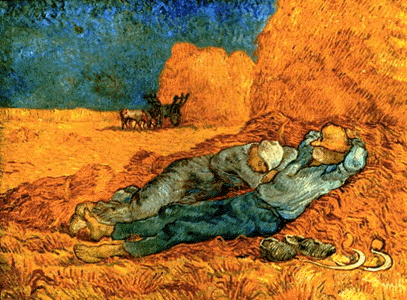|
Vincent Van Gogh was born in March 30, 1853 in Groot-Zundest, Holland and died in July 27, 1890 in France. A turning point in his life (1880): he abandoned his religious pursuits and devoted himself exclusively to painting the miners in the Borinage, in Belgium. Theo, his brother, began to financially support him, a situation that would continue until the end of Vincent's life. After the death of his father in March, Van Gogh continued with his work and, in early spring, he painted his famous work The Potato Eaters (1885). In 1886 he went to Paris to join Théo who was managing an art gallery in Montmartre. His brother introduced him to the works of the Impressionists: Monet, Renoir, Pissarro, Degas and Seurat. Later in the year Van Gogh met Gauguin. In October 1888 Gauguin joined him in Arles to found a school of art - a pivotal point in Van Gogh's life. He began painting sunflowers to decorate Gauguin's bedroom. Towards the end of the year, in a fit of madness, he pursued his friend with an open razor, was stopped by Gauguin, but ended up cutting his own ear off and committed himself to an asylum in Saint-Remy for treatment. While there, he painted Starry Night over the Rhone (1888). In 1889 Van Gogh left Saint Remey and began contacting Theo. In May of 1890, he seemed much better and went to live in Auvers-sur-Oise, producing more than 80 paintings in the last two months remaining to him when he shot himself "for the good of all". During his brief career he had sold one painting. Van Gogh's finest works were produced in less than three years. |
